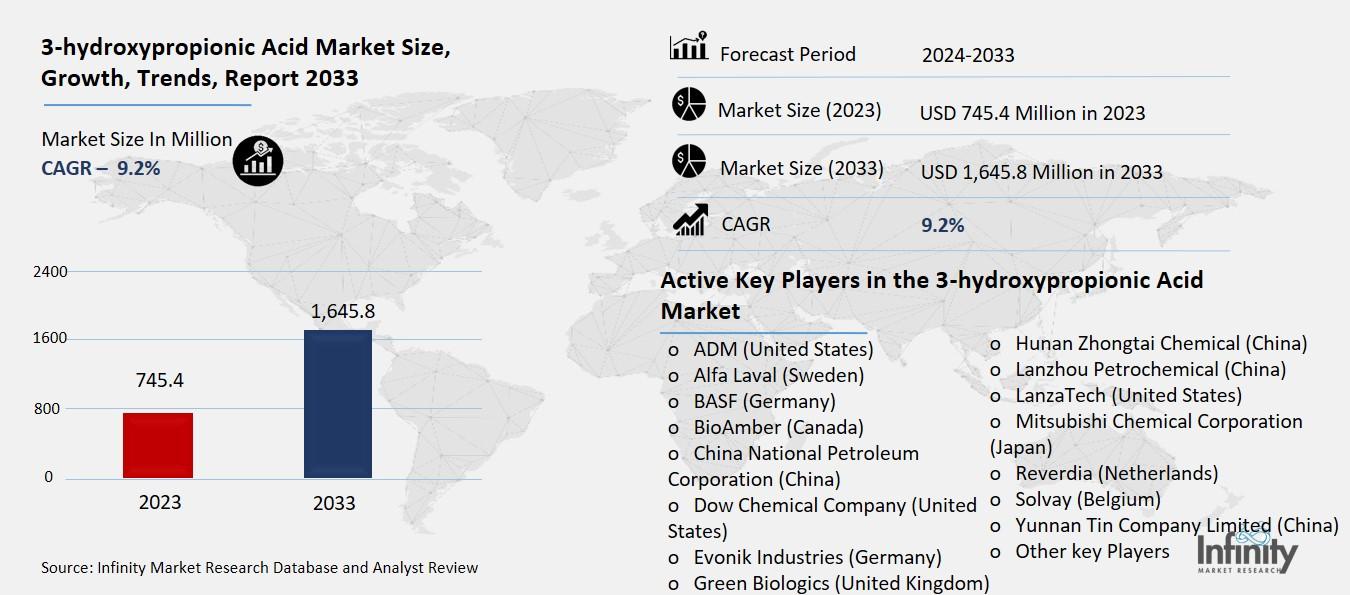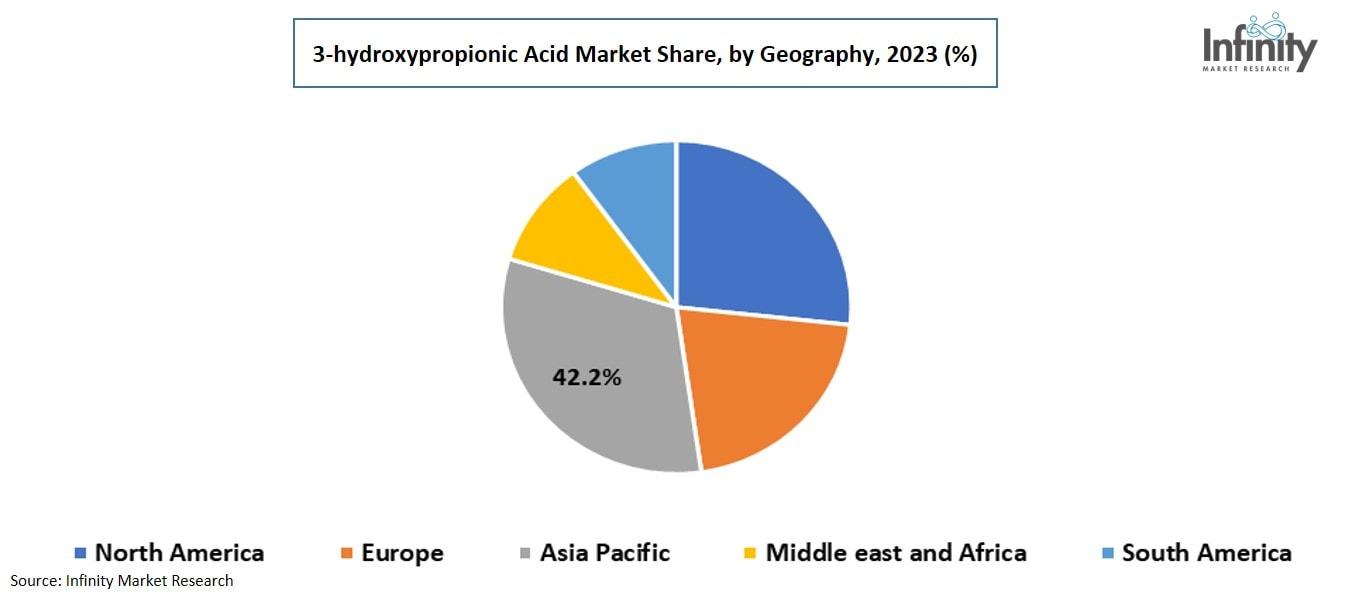
🔐 Secure Payment Guaranteed
Safe checkout with trusted global payment methods.
🌟 Why Choose Infinity Market Research?
At Infinity Market Research, we dont just deliver data — we deliver clarity, confidence, and competitive edge.
In a world driven by insights, we help businesses unlock the infinite potential of informed decisions.
Here why global brands, startups, and decision-makers choose us:
Industry-Centric Expertise
With deep domain knowledge across sectors — from healthcare and technology to manufacturing and consumer goods — our team delivers insights that matter.
Custom Research, Not Cookie-Cutter Reports
Every business is unique, and so are its challenges. Thats why we tailor our research to your specific goals, offering solutions that are actionable, relevant, and reliable.
Data You Can Trust
Our research methodology is rigorous, transparent, and validated at every step. We believe in delivering not just numbers, but numbers that drive real impact.
Client-Centric Approach
Your success is our priority. From first contact to final delivery, our team is responsive, collaborative, and committed to your goals — because you re more than a client; you re a partner.
Recent Reports
Global Myopia Control Lenses Market Report 2025-33
Hyaluronic Acid-based Dermal Fillers Market Report
3-hydroxypropionic Acid Market
3-hydroxypropionic Acid Market Global Industry Analysis and Forecast (2024-2032) by Source (Renewable, Non-Renewable), Form (Powder, Liquid), Application (Acrylic Acid Production, Biodegradable Polymer Production, Others) and Region
Jan 2025
Chemicals and Materials
Pages: 138
ID: IMR1413
3-hydroxypropionic Acid Market Synopsis
3-hydroxypropionic Acid Market Size Was Valued at USD 745.4 Million in 2023, and is Projected to Reach USD 1,645.8 Million by 2032, Growing at a CAGR of 9.2% From 2024-2032.
3-hydroxypropionic acid (3-HP) is an important intermediate or platform molecule which has potential in bioplastics, biofuels as well as in synthesis of other valuable chemicals. It is a naturally occurring chemical which is produced by biological methods without using any or with limited usage of non-renewable resources like petrochemicals. The major synthesis processes of 3-HP are fermentation and chemical syntheses. The compound is listed as a desirable product in the renewable chemicals market based on the currently preferred green chemical synthesis methods and with considered increasing consumer preference for non petroleum chemicals. The growing market for 3-HP has the potential to displace traditional petrochemical derivatives, and that has made experts predict it to grow. Whereas the production of 3-hydroxypropionic acid was at one time associated with industries that relied on large amounts of resources and energy, it is now finding its place in becoming one of the key enabling materials in industries that are transitioning to sustainable models ranging from automotive, packaging, and consumer goods industries.
o Currently, the global market for 3-hydroxypropionic acid is gradually expanding, while consumer demand for environmentally friendly chemicals is growing. Industries are becoming more conscious of their contribution to these environmental concerns and thus are turned their focus onto products derived from renewable feedstocks as an alternative to petrochemical feedstocks: 3-HP is therefore being considered as one of the feedstocks capable of meeting this demand. The market is defined by rationalization of the production technologies with the aid of, for instance, the fermentative processes that allow the transformation of renewable resources into the desired chemicals. More and more companies are given their attention on the production processes of these bio-based chemicals and in increasing the effectiveness of these processes due to the increasing market demand. Moreover, increased use of renewable feedstocks in the chemical processing industry should also be an advantage to the market especially with increase in emphasis of sustainability in such regions as North America and Europe.
o This field of the 3-hydroxypropionic acid market is also experiencing innovations in the application in say for example the bioplastics industry. Biodegradable polymers are the new major focus due to a developing consciousness on the harm caused by normal plastics on the surroundings due to the impact they have when they are not biodegradable. In addition, the increasing use of 3-HP as a material for the production of biofuels especially in transportation and industries is projected to contribute to the market growth. The Asia-Pacific, especially China is signifying as a global market for manufacturing of 3-HP because of the huge industrial base and availability of feed stocks and venture into green technology. The market is also experiencing a growth in market research as more firms work towards production optimisation and elevating the cost of materials.
3-hydroxypropionic Acid Market Outlook, 2023 and 2032: Future Outlook

3-hydroxypropionic Acid Market Trend Analysis
Trend: Shift Toward Bio-based Chemicals
The trend that propels the 3-hydroxypropionic acid market is the global focus on the bio-based chemicals industry. Fossil fuels have over the years have been the primary raw material inputs into chemical production in the chemical industry. However, with increasing emphasis on the negative effect of fossil fuel based chemicals on the environment, there is a good market for green chemicals such as 3-hydroxypropionic acid.
More and more importance is being placed on sustainable chemical processes and green chemistry principles which has lead to this shift. The global carbon emissions and plastic waste regulation will help the governments and industries to grow increasing the requirements for 3-HP. The application of 3-HP in the synthesis of biodegradable plastics, biofuels and various chemicals make it suitable to meet business objective where the use of environmentally friendly products is preferred by customers.
Driver: Increasing Demand for Sustainable and Renewable Chemicals
The main factor that has been seen to be triggering the expansion of the 3-hydroxypropionic acid market is the need to have eco-friendly chemicals. With increased awareness on environmental pollution and climate change, industries are seeking to make changes towards environmentally sustainable courses, and therefore the need to make 3-HP which is synthesized from renewable feedstocks such as agricultural residues, sugars and glycerol more environmentally sustainable than petrochemicals.
Packaging, automotive, textile and consumer goods sectors stated their transition to utilizing bio-based products to conform to necessary sustainability objectives as well as to capitalize on the customer preference for sustainable products. In addition, policies implemented by governments to offer incentives towards the utilization and production of green sciences are also motivating firms to manufacture bio based chemicals such as 3-HP. It is anticipated that in the future, more companies will look for ways on how they are going to minimize the emission of carbon, thus making the consumption of 3-hydroxypropionic acid increase remarkably.
Restraint: High Production Costs
However, 3-hydroxypropionic acid market has certain limitations which might slow down its development, with high production cost being the primary one. The traditionally known synthesis approaches of 3-HP, inclusive of fermentation, has certain drawbacks such as high costs of the starting reagents, high power consumption, and the general complexity of the process. Moreover, the required equipment and conditions for the process of the 3-HP production based on the fermentation also add to the total cost.
However, one critical issue of interest is cost-effective principally, for implementation in the commercial field, where technologies and advanced processes are already in development. Unfortunately, these high production costs may make bio-based 3-HP significantly less price competitive when compared with petrochemical derived materials that are often produced at a substantially lower cost. This may depress the market growth of 3-HP, especially in areas whose customers derive most of their revenues from sales, and thus are sensitive to the price of inputs.
Opportunity: Expansion of Bioplastics and Biofuels Markets
One of the major outlets of growth for 3-hydroxypropionic acid market is the development of the bio plastics and bio fuels industry. The demand for right kind of plastics that is bio-plastics and environment friendly is on the rise with a focus on renewable resources and hence this is a good opportunity for 3-HP. One of the most important applications of 3-HP is in the synthesis of polyhydroxyalkanoates (PHA), a biodegradable plastic substitute for conventional plastic.
Also, similarly to branched-chain dicarboxylic acids, 3-HP can be used in making biofuels, which are gradually being employed as renewable sources of energy as opposed to classical fossil fuels. As global governments and firms proclaim and pledge to cut greenhouse gases emissions, the need for bio fuels and bioplastics is anticipated to increase. This is an opportunity for companies engaged in the production of 3-HP to enter the above markets and develop otherproducto.
3-hydroxypropionic Acid Market Segment Analysis
3-hydroxypropionic Acid Market Segmented on the basis of Source, Form and Application.
By Source, Renewable segment is expected to dominate the market during the forecast period
The renewable source segment is likely to remain in the majority during the forecast period in the context of 3-hydroxypropionic acid market. Today, 3-HP is obtained from renewable raw materials like agricultural residues, starches, and glycerol all in an effort to make commercial production green. The strengths of renewable feedstocks are its availability whereby it is cheaper to source compared to the fossil based resources hence it has a lesser or reduced carbon footprint. Because of the current emphasis of industries on sustainability, developing renewable resources for the production of 3-HP is becoming more favored. In addition, the rise of biotechnology to create an engineered microbe for the fermentation process, which is critical in the production of 3-HP using renewable feedstocks has been enhanced. Trending issues such as green chemistry and renewable chemistry to support renewable power sources can be expected to increase dominance of the renewable power supply listed above in the market even further in the future.
Also, the generation of 3-HP from renewable sources removes dependency on non-renewable resources and decreases the output on the carbon footprint of the process. This is in consonance with sustainable global policies and governmental statute directing the use of renewable feed stocks in the chemical manufacturing industry. As the market for bio-based chemicals remain in the advancement, renewable source segment is expected to remain the largest segment for 3-HP market. This trend will be backed by constant investment in Research and Development of renewable based production to enhance the efficiency and increase capacity.
By Form, Powder segment expected to held the largest share
Out of these segments, the powder segment in the 3-hydroxypropionic acid market is expected to dominate the market during the forecast period. The 3-HP is available in powder form and is highly convenient to handle, store, and transport than the liquid 3-HP. The powder form also entails better dosing and notation as well as a better altercation in many diverse industrial applications. Especially for the uses in bioplastics biofuels and specialty chemicals this compound is highly chosen because of its stability. ‘Huge potential for its use remains in the growing sectors, such as 3-HP for production of Greener chemicals, biodegradable plastics, biofuels and also, the powder segment. In addition, more demand of 3-HP in pharmaceutical and food industry which are widely used powder formulation will contribute to this segment.
3-HP in its powder form is most sought after for the industry and is used as a starting material towards the formation of bioplastics like PHA. The powder segment is expected to grow due to the rising demand of bioplastics as an alternative to plastic and traditional plastics, which have been a growing concern to the people and the environment. also, the 3-HP in powder form is versatile and easily fold into the production line whether via fermentation or chemical synthesis, making it a top pick among the chemical industry producers.
3-hydroxypropionic Acid Market Regional Insights
Asia Pacific is Expected to Dominate the Market Over the Forecast period
The current analysis indicates that the Asia-Pacific is currently the largest consumer of 3-hydroxypropionic acid in the global market as of 2023. To a large extent, China benefits from the strong industrial sector, diversified supply of raw materials, and increased funding for environmentally friendly solutions in terms of the production of 3-HP. The latter country has recently experienced a rapid increase of production in 3-HP due to increased interest in green chemistry and abundance of bio-based chemicals. India and Japan and other countries of Asia-Pacific region are also playing their role for the development of this market. Furthermore, the region has access to inexpensive renewable sources of raw material, which enhances the market growth of the 3-HP. According to market share in 2023, the Asia-Pacific region becomes the largest regional market occupying 40-45% of the global 3-HP market.
3-hydroxypropionic Acid Market Share, by Geography, 2023 (%)

Active Key Players in the 3-hydroxypropionic Acid Market
o ADM (United States)
o Alfa Laval (Sweden)
o BASF (Germany)
o BioAmber (Canada)
o China National Petroleum Corporation (China)
o Dow Chemical Company (United States)
o Evonik Industries (Germany)
o Green Biologics (United Kingdom)
o Hunan Zhongtai Chemical (China)
o Lanzhou Petrochemical (China)
o LanzaTech (United States)
o Mitsubishi Chemical Corporation (Japan)
o Reverdia (Netherlands)
o Solvay (Belgium)
o Yunnan Tin Company Limited (China)
o Other key Players
Global 3-hydroxypropionic Acid Market Scope
|
Global 3-hydroxypropionic Acid Market | |||
|
Base Year: |
2023 |
Forecast Period: |
2024-2032 |
|
Historical Data: |
2017 to 2023 |
Market Size in 2023: |
USD 745.4 Million |
|
Forecast Period 2024-32 CAGR: |
9.2% |
Market Size in 2032: |
USD 1,645.8 Million |
|
Segments Covered: |
By Source |
· Renewable · Non-Renewable | |
|
By Form |
· Powder · Liquid | ||
|
By Application |
· Acrylic Acid Production · Biodegradable Polymer Production · Others | ||
|
By Region |
· North America (U.S., Canada, Mexico) · Eastern Europe (Bulgaria, The Czech Republic, Hungary, Poland, Romania, Rest of Eastern Europe) · Western Europe (Germany, UK, France, Netherlands, Italy, Russia, Spain, Rest of Western Europe) · Asia Pacific (China, India, Japan, South Korea, Malaysia, Thailand, Vietnam, The Philippines, Australia, New-Zealand, Rest of APAC) · Middle East & Africa (Turkey, Bahrain, Kuwait, Saudi Arabia, Qatar, UAE, Israel, South Africa) · South America (Brazil, Argentina, Rest of SA) | ||
|
Key Market Drivers: |
· Increasing Demand for Sustainable and Renewable Chemicals | ||
|
Key Market Restraints: |
· High Production Costs | ||
|
Key Opportunities: |
· Expansion of Bioplastics and Biofuels Markets | ||
|
Companies Covered in the report: |
· ADM (United States), Alfa Laval (Sweden), BASF (Germany), BioAmber (Canada), China National Petroleum Corporation (China), Dow Chemical Company (United States) and Other Major Players. | ||
📘 Frequently Asked Questions
1. What would be the forecast period in the 3-hydroxypropionic Acid Market research report?
Answer: The forecast period in the 3-hydroxypropionic Acid Market research report is 2024-2032.
2. Who are the key players in the 3-hydroxypropionic Acid Market?
Answer: ADM (United States), Alfa Laval (Sweden), BASF (Germany), BioAmber (Canada), China National Petroleum Corporation (China), Dow Chemical Company (United States) and Other Major Players.
3. What are the segments of the 3-hydroxypropionic Acid Market?
Answer: The 3-hydroxypropionic Acid Market is segmented into Source, Form, Application and region. By Source, the market is categorized into Renewable, Non-Renewable. By Form, the market is categorized into Powder, Liquid. By Application, the market is categorized into Acrylic Acid Production, Biodegradable Polymer Production, Others. By region, it is analyzed across North America (U.S.; Canada; Mexico), Eastern Europe (Bulgaria; The Czech Republic; Hungary; Poland; Romania; Rest of Eastern Europe), Western Europe (Germany; UK; France; Netherlands; Italy; Russia; Spain; Rest of Western Europe), Asia-Pacific (China; India; Japan; Southeast Asia, etc.), South America (Brazil; Argentina, etc.), Middle East & Africa (Saudi Arabia; South Africa, etc.).
4. What is the 3-hydroxypropionic Acid Market?
Answer: 3-hydroxypropionic acid (3-HP) is an important intermediate or platform molecule which has potential in bioplastics, biofuels as well as in synthesis of other valuable chemicals. It is a naturally occurring chemical which is produced by biological methods without using any or with limited usage of non-renewable resources like petrochemicals. The major synthesis processes of 3-HP are fermentation and chemical syntheses. The compound is listed as a desirable product in the renewable chemicals market based on the currently preferred green chemical synthesis methods and with considered increasing consumer preference for non petroleum chemicals. The growing market for 3-HP has the potential to displace traditional petrochemical derivatives, and that has made experts predict it to grow. Whereas the production of 3-hydroxypropionic acid was at one time associated with industries that relied on large amounts of resources and energy, it is now finding its place in becoming one of the key enabling materials in industries that are transitioning to sustainable models ranging from automotive, packaging, and consumer goods industries.
5. How big is the 3-hydroxypropionic Acid Market?
Answer: 3-hydroxypropionic Acid Market Size Was Valued at USD 745.4 Million in 2023, and is Projected to Reach USD 1,645.8 Million by 2032, Growing at a CAGR of 9.2% From 2024-2032.


🔐 Secure Payment Guaranteed
Safe checkout with trusted global payment methods.
🌟 Why Choose Infinity Market Research?
- Accurate & Verified Data:Our insights are trusted by global brands and Fortune 500 companies.
- Complete Transparency:No hidden fees, locked content, or misleading claims — ever.
- 24/7 Analyst Support:Our expert team is always available to help you make smarter decisions.
- Instant Savings:Enjoy a flat $1000 OFF on every report.
- Fast & Reliable Delivery:Get your report delivered within 5 working days, guaranteed.
- Tailored Insights:Customized research that fits your industry and specific goals.




